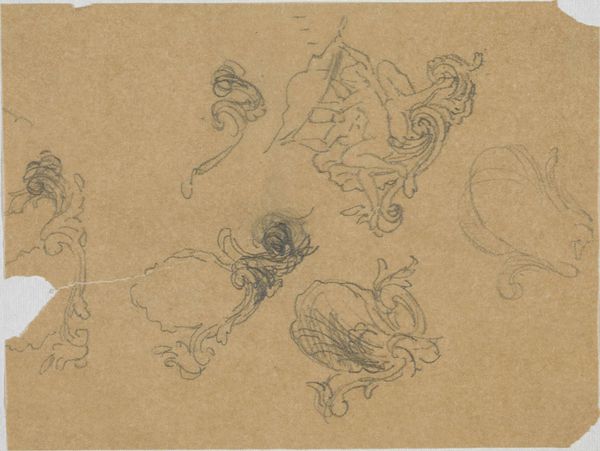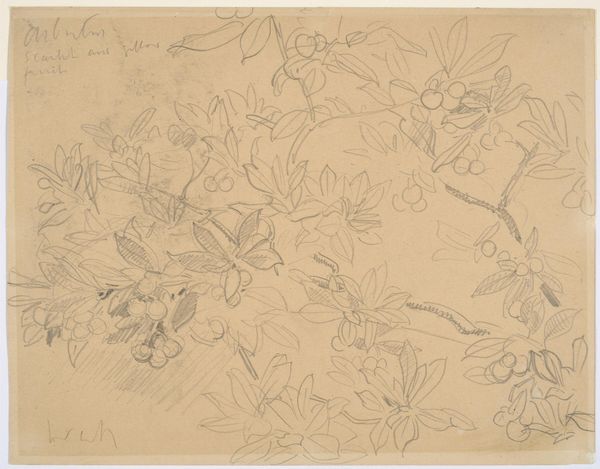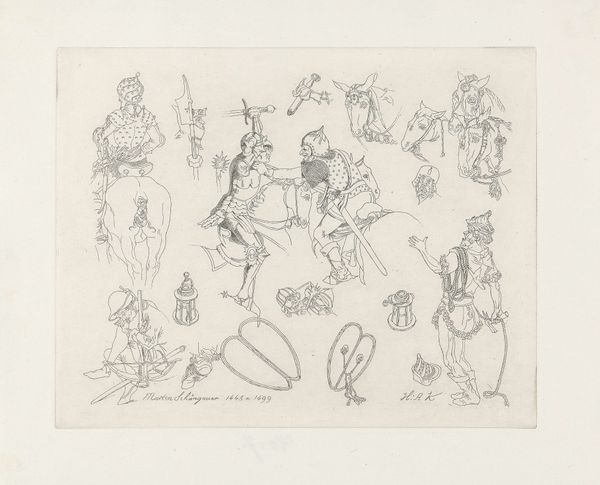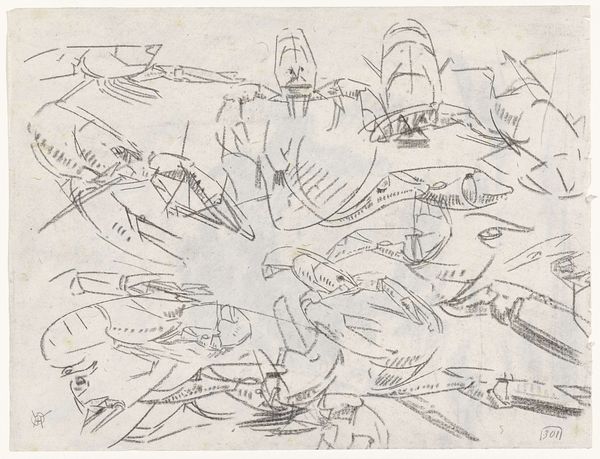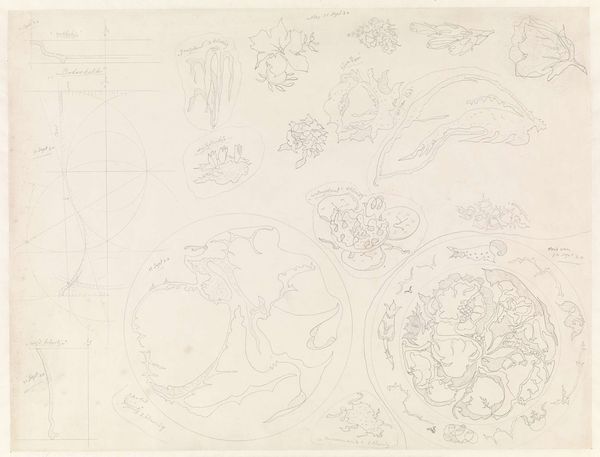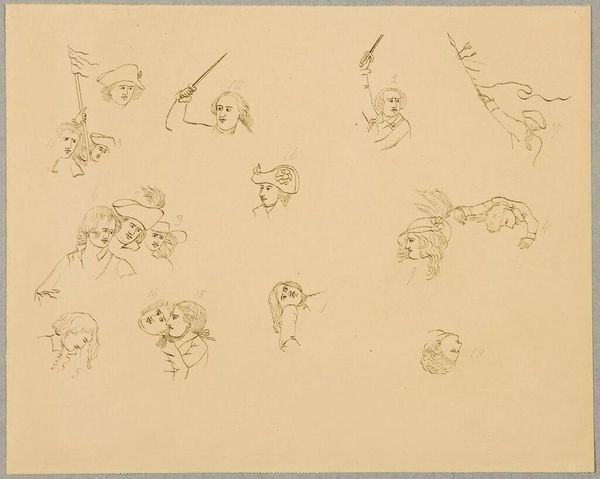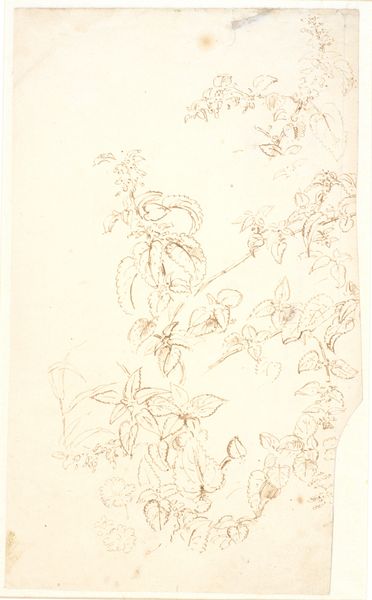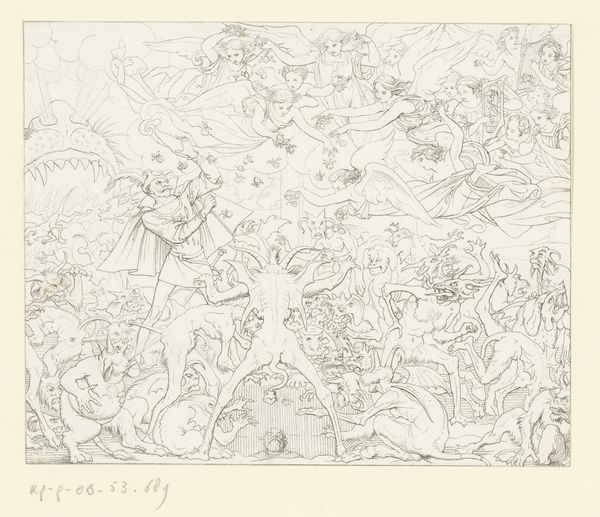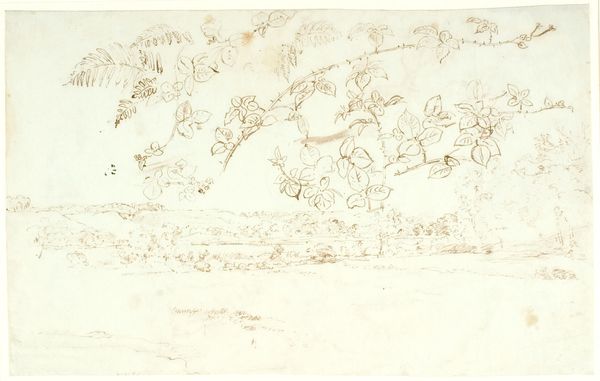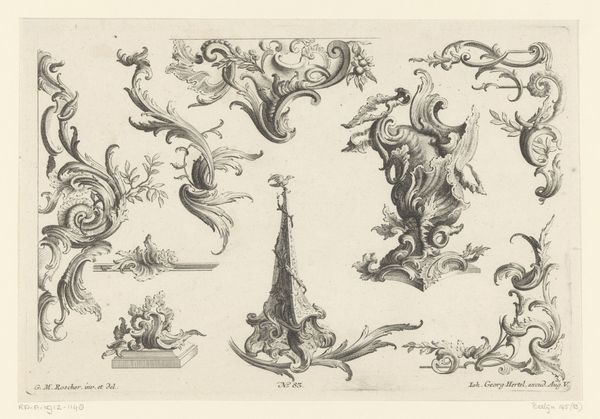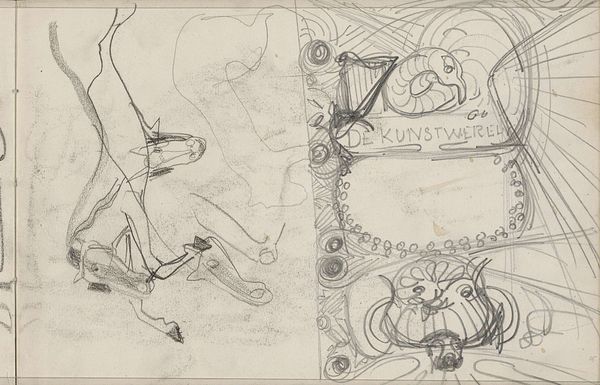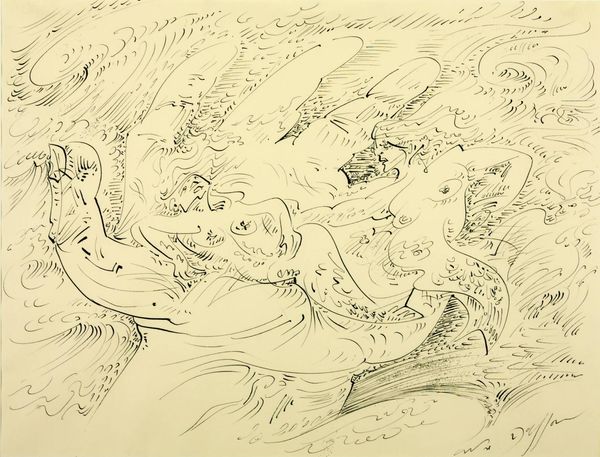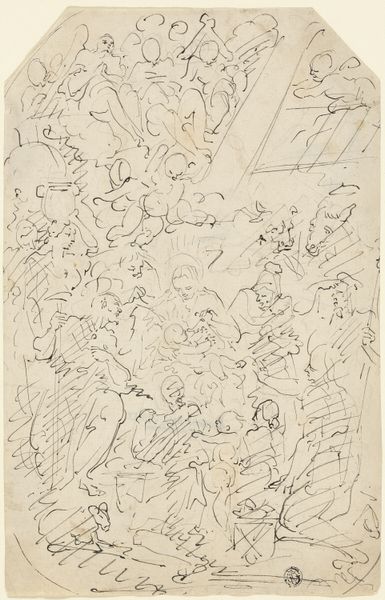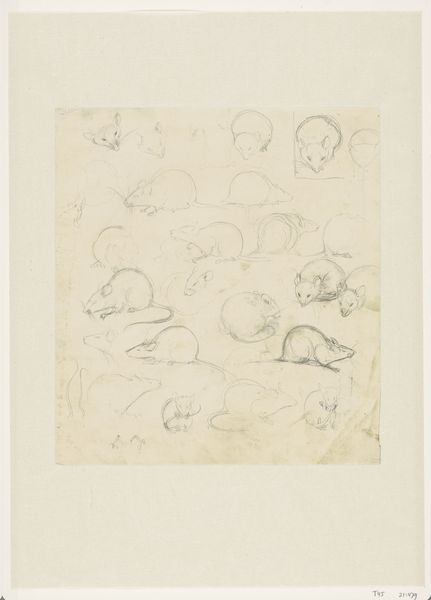
33 Bloemornamenten voor aardewerkdecoratie en zes halfprofielen voor vazen en bakjes Possibly 1920 - 1926
0:00
0:00
Dimensions: height 325 mm, width 492 mm
Copyright: Rijks Museum: Open Domain
Curator: Theo Colenbrander created this drawing, titled "33 Bloemornamenten voor aardewerkdecoratie en zes halfprofielen voor vazen en bakjes," likely between 1920 and 1926. It's a pencil drawing on paper. What strikes you first about it? Editor: It feels like a garden viewed through a frosted window—delicate but obscured, the lines are light, the forms repeating... It’s inherently fragmented in its composition. Curator: Indeed. As a design for ceramics, the fragmentation speaks to a process of mass production. We're seeing the precursor to repeated motifs on functional, mass-produced objects. These weren’t intended as standalone art pieces but as blueprints. Editor: Interesting! So, in that sense, it’s less about a single perfect representation of a flower and more about creating modules that can be adapted for various ceramic forms? Looking at the stark quality of the lines, I find they do maintain an undeniable visual purity—each design seems contained and very meticulously thought out. Curator: Precisely. And we have to consider the context of the Art Nouveau movement, and the rejection of industrial modes of production; while ostensibly designs for manufactured items, there's also a clear effort to retain hand-crafted individuality within them. The small text scattered about points towards careful consideration of the technical aspect of ceramics decoration. Editor: It’s quite clever. In employing seemingly simple lines Colenbrander captures what's absolutely necessary in a flower, leaving out any superfluous information and still retaining the design's essence. You pointed at production process considerations: I believe these sparse, clean lines facilitate this by cutting down labor in future stages. Curator: A sharp observation. It highlights how art and labor entwine within the framework of design. Editor: Exactly! This piece invites reflection not just on aesthetics but on how those choices reflect the economic conditions of its making. Curator: In examining the design principles as functions of labor, we have unpacked some of the fascinating layers embedded within what appears at first glance to be simply preliminary sketches. Editor: And to think, all from some outlines of flowers! I'll look at my teacups with fresh eyes now.
Comments
No comments
Be the first to comment and join the conversation on the ultimate creative platform.
